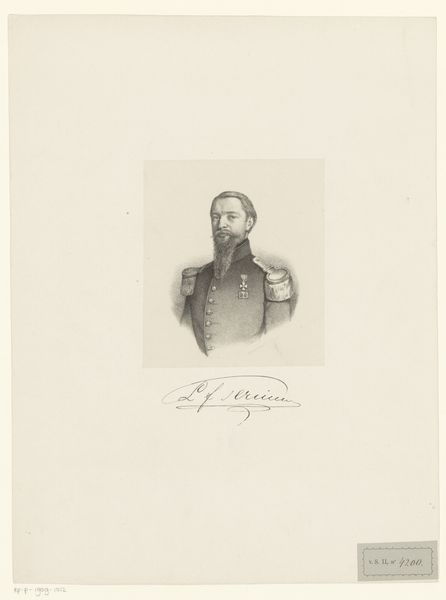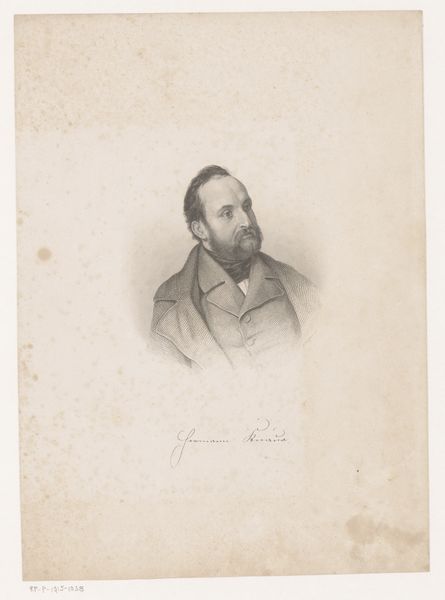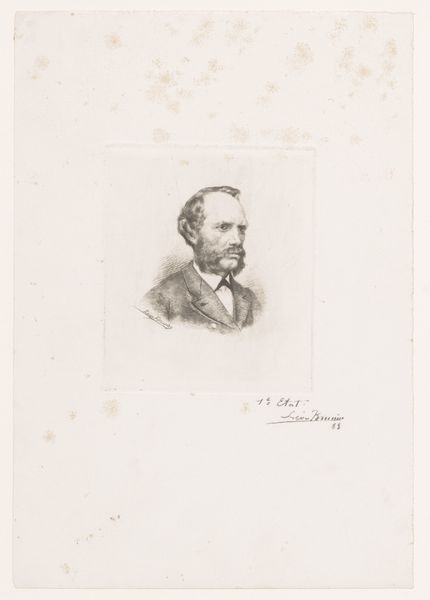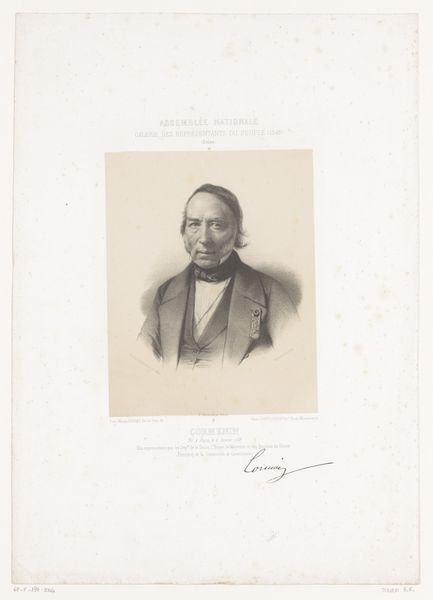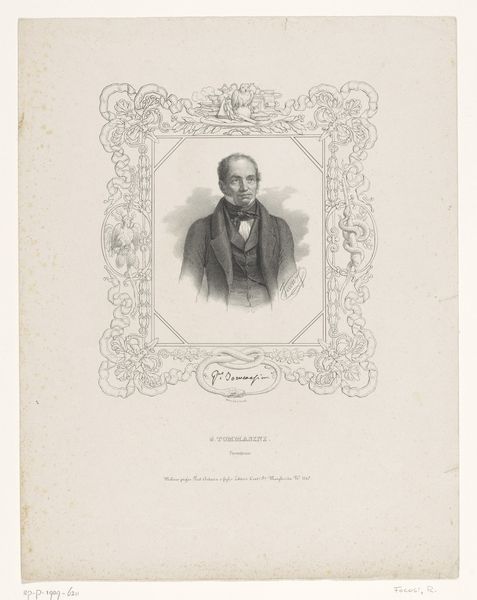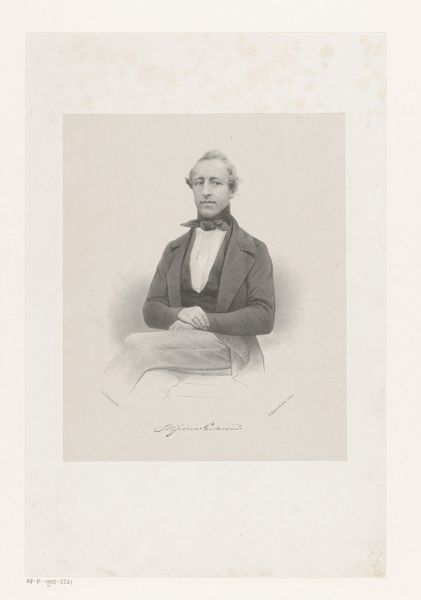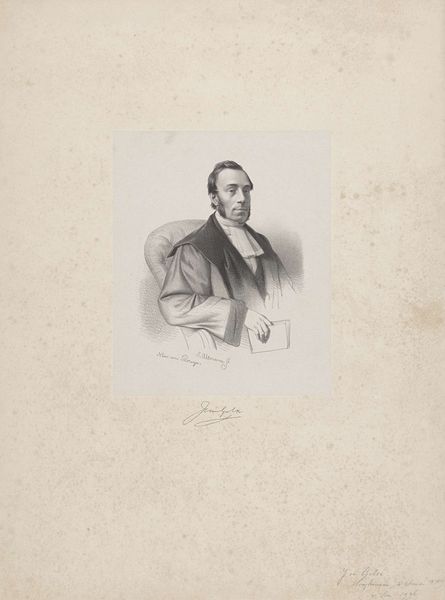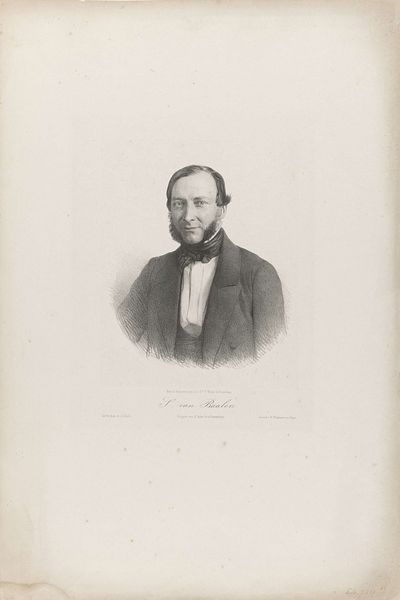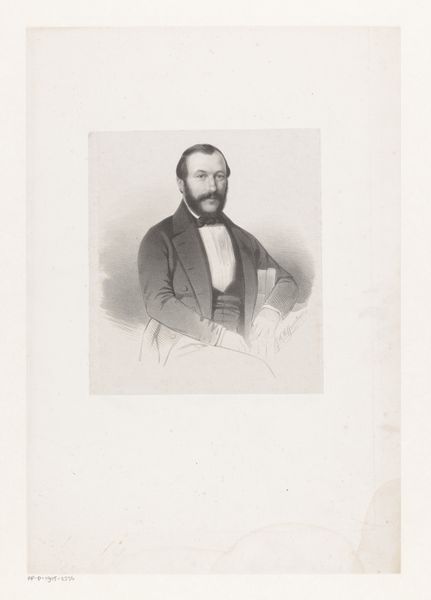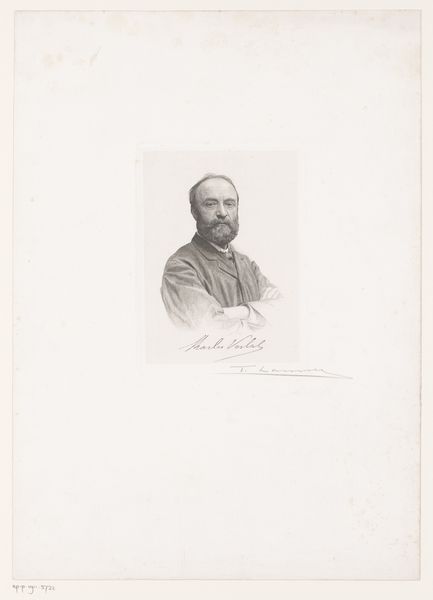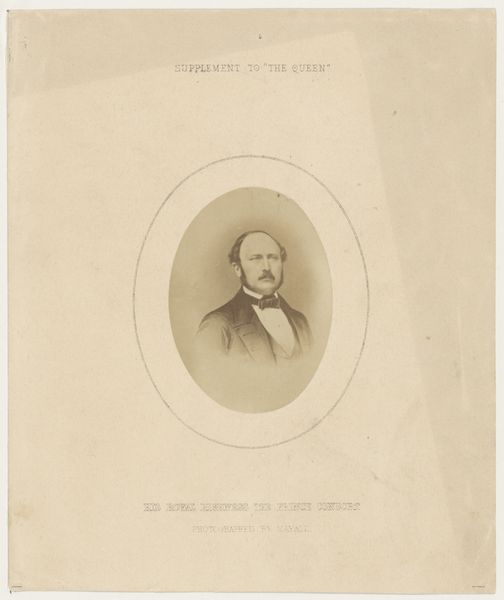
lithograph, print, etching, graphite, engraving
#
portrait
#
pencil drawn
#
neoclacissism
#
light pencil work
#
16_19th-century
#
lithograph
# print
#
etching
#
pencil sketch
#
graphite
#
pencil work
#
history-painting
#
academic-art
#
engraving
#
realism
Dimensions: height 398 mm, width 283 mm
Copyright: Rijks Museum: Open Domain
Editor: Here we have "Portrait of Eugène Cavaignac," made around 1848-1849 by Jean-Baptiste Adolphe Lafosse. It looks like a lithograph, almost like a very detailed pencil sketch. It’s…intense. He looks so serious! What do you see in this piece? Curator: Intense is a great word. The lithograph has captured Cavaignac, the French general, with an almost photographic realism, a starkness that seems to reflect the turbulent times he lived through. What strikes me most is the weight of responsibility etched onto his face, the way his eyes seem to bore into you. Do you get a sense of that burden? Editor: Absolutely, I do. The crossed arms, the slightly downturned mouth...it’s all very powerful. Is that why the artist chose this particular medium? Curator: Precisely. Lafosse opted for a medium that allowed for incredible detail and subtle gradations of tone. Lithography and etching, these capture the nuances of light and shadow on his face. Think of it as a sculptor using clay to mold character. How do you think it aligns to the Neoclassical movement, even with the strong elements of realism? Editor: Well, maybe it’s in the idealized presentation of Cavaignac, even with the gravity, there's something heroic about it. And the clear lines and order bring forth that concept of civic virtue. I didn't realize so much could be conveyed in a simple print! Curator: Exactly! Art whispers to us across the years, revealing not just the appearance of a person, but the very soul of an era. Isn't it wonderful how a portrait, seemingly simple at first glance, becomes a gateway to understanding history?
Comments
No comments
Be the first to comment and join the conversation on the ultimate creative platform.
